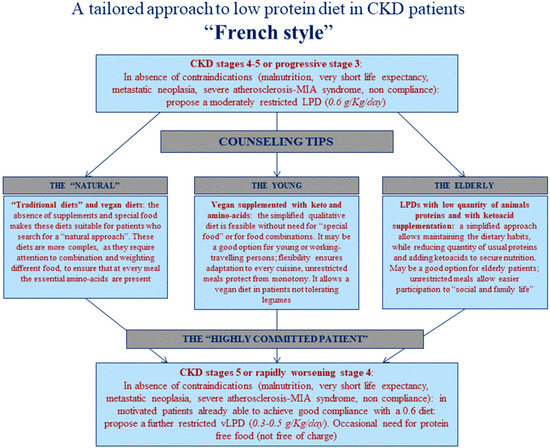Table of Contents
- Hygiene for Children
- Oral Hygiene
- Handwashing
- Bathing
- Hygiene for the Elderly
- Mobility Assistance
- Assisted Grooming
- Incontinence Care
- Hygiene for Individuals with Disabilities
- Accessible Facilities
- Assistive Tools
- Customized Care Plans
- Hygiene for Specific Health Conditions
- Skin Conditions
- Chronic Illness
- Infections
Hygiene is a fundamental aspect of human life, contributing not only to physical health but also to overall well-being. While good hygiene practices are universally important, it’s crucial to recognize that different populations may have unique needs and challenges when it comes to maintaining cleanliness. In this article, we’ll explore the importance of tailored hygiene approaches for special populations, encompassing children, the elderly, individuals with disabilities and those facing specific health conditions.
Certainly, let’s delve deeper into the significance of recognizing and addressing the unique hygiene needs of special populations:
Promoting Dignity and Independence:
One of the paramount reasons for tailoring hygiene approaches is to preserve the dignity and independence of individuals within special populations.
Children: Teaching children proper hygiene from an early age not only instills good habits but also fosters a sense of independence. As they learn to care for themselves, they gain confidence and a feeling of accomplishment.
Elderly: For the elderly, maintaining personal hygiene can become challenging due to physical limitations or cognitive decline. By adapting hygiene practices and providing assistance when necessary, we allow them to maintain a sense of self-sufficiency and dignity.
Individuals with Disabilities: People with disabilities often value their independence highly. Customizing hygiene routines and providing assistive tools empower them to carry out these tasks autonomously, contributing to their overall well-being and self-esteem.
Preventing Health Complications:
Tailored hygiene approaches are instrumental in preventing health complications unique to each population.
Children: By teaching children the importance of regular handwashing and oral hygiene, we not only protect them from common childhood illnesses but also instill lifelong habits that reduce their risk of chronic diseases in adulthood.
Elderly: Falls in the bathroom or infections due to inadequate hygiene can have severe consequences for the elderly. Tailored hygiene measures that consider mobility and safety can significantly reduce the risk of accidents and illnesses.
Individuals with Disabilities: Proper hygiene is crucial for preventing secondary health issues that can arise from neglecting personal care. Tailored hygiene routines help mitigate these risks and improve overall health.
Specific Health Conditions: Customized hygiene plans are essential for individuals with specific health conditions. For example, meticulous wound care is crucial for those with diabetes to prevent infections, while individuals with contagious illnesses require stringent measures to protect themselves and others.
Enhancing Quality of Life:
Recognizing and addressing unique hygiene needs can significantly enhance the quality of life for special populations.
Children: Teaching children good hygiene practices not only promotes physical health but also fosters a sense of responsibility and self-care. This foundation can positively impact their overall development.
Elderly: Providing the necessary support and tailored solutions for elderly individuals to maintain hygiene helps preserve their comfort and overall well-being, reducing the risk of discomfort and infections.
Individuals with Disabilities: Empowering individuals with disabilities to engage in self-care routines that align with their specific needs enhances their independence, self-esteem and overall satisfaction with life.
Specific Health Conditions: For those facing specific health conditions, tailored hygiene practices can mean the difference between managing their condition effectively and experiencing worsening symptoms or complications.
In conclusion, hygiene isn’t a one-size-fits-all concept. Recognizing the unique needs and challenges faced by different populations allows us to tailor our approach, promoting dignity, independence and overall well-being. By doing so, we contribute to a more inclusive and compassionate society that values the health and happiness of all its members, regardless of age, abilities or health conditions.
Additionally, you can find further information on this topic by visiting this page: High-quality health systems in the Sustainable Development Goals …
Hygiene for Children
Teaching children proper hygiene habits is essential for their growth and development. However, children often require special attention and guidance due to their limited understanding and motor skills.
Teaching children proper hygiene habits is essential for their growth and development, as these habits lay the foundation for a lifetime of good health and well-being. However, children, especially those in their early years, often require special attention and guidance due to their limited understanding and developing motor skills. Here’s why focusing on children’s hygiene education is paramount:
Establishing Lifelong Habits: Childhood is a critical period for instilling habits and hygiene is no exception. By teaching children proper hygiene from a young age, you’re setting the stage for them to carry these habits into adulthood. This can significantly impact their long-term health and quality of life.
Preventing Illness: Children are more susceptible to illnesses due to their still-developing immune systems. Teaching them hygiene practices like handwashing and proper coughing/sneezing etiquette can greatly reduce the spread of germs, leading to fewer sick days and better overall health.
Building Self-Confidence: Good hygiene is closely linked to self-esteem and confidence. When children feel clean and fresh, they are more likely to feel good about themselves. This can positively impact their social interactions and self-perception.
Educating on Consequences: Children may not fully understand the consequences of poor hygiene, such as dental issues or infections. Providing age-appropriate explanations can help them grasp why these practices are important and how they can protect themselves from discomfort and illness.
Incorporating Fun and Creativity: Teaching hygiene to children can be made engaging and enjoyable. Incorporating games, colorful visuals and songs can make learning about hygiene a fun and memorable experience, encouraging them to embrace these habits willingly.
Supervision and Modeling: Young children often require direct supervision to ensure they are practicing proper hygiene. Parents and caregivers play a crucial role by modeling these behaviors themselves. Children are more likely to adopt habits they see adults practicing regularly.
Adapting to Developmental Stages: As children grow, their understanding and motor skills evolve. It’s important to adapt the way hygiene habits are taught to match their developmental stage. For example, toddlers may need more hands-on assistance, while older children can take on more responsibility.
Fostering Independence: Teaching children hygiene isn’t just about doing things for them; it’s about gradually fostering independence. As they become more capable, they can take charge of their hygiene routines, which is an important step towards self-sufficiency.
In conclusion, teaching children proper hygiene habits is an investment in their physical and emotional well-being. It’s an essential part of their education and development that, when approached with patience and creativity, can have a profound impact on their health and self-esteem throughout their lives.
For additional details, consider exploring the related content available here Hygiene in Emergencies – The Global Handwashing Partnership

Oral Hygiene
Teaching children to brush and floss their teeth properly is critical for preventing dental issues. Parents and caregivers should supervise and assist young children in this process until they can do it independently.
Teaching children proper oral hygiene habits from a young age is not only critical for preventing immediate dental issues but also for setting them on the path to lifelong dental health. The responsibility primarily falls on parents and caregivers to instill good oral hygiene practices in children. Here’s an extended perspective on this important topic:
Early Education for Lifelong Benefits: The habits children develop in their early years often stay with them throughout their lives. Teaching them to brush and floss correctly is like giving them a lifelong gift of oral health. It’s not just about preventing cavities and gum disease in childhood but also about reducing the risk of dental problems in adulthood.
Supervision and Guidance: Children often lack the dexterity and patience to brush and floss effectively on their own, especially when they’re very young. Parents and caregivers play a crucial role in supervising and guiding them through this process. By doing so, adults ensure that children are not just going through the motions but are actually cleaning their teeth and gums properly.
Setting a Positive Example: Children tend to emulate the behavior of the adults around them. When parents and caregivers demonstrate good oral hygiene practices, they set a positive example for children to follow. This not only includes brushing and flossing but also maintaining regular dental check-ups. The more children see these behaviors as a natural part of daily life, the more likely they are to continue them into adulthood.
Fun and Interactive Learning: Turning brushing and flossing into a fun and interactive activity can make it more enjoyable for children. There are various toothbrushes, toothpaste flavors and even mobile apps designed to engage kids in the process. These tools can help turn what might otherwise be seen as a chore into a playful and educational experience.
Understanding the Why: Explaining to children why oral hygiene is essential can be surprisingly effective. When children understand that brushing and flossing remove harmful bacteria that can cause tooth decay and gum disease, they may be more motivated to participate in the routine willingly.
Gradual Transition to Independence: As children grow, they should be encouraged to take on more responsibility for their own oral hygiene. This transition should be gradual, with parents and caregivers continuing to monitor and provide guidance until they are confident that their child can brush and floss effectively on their own.
Regular Dental Check-ups: In addition to daily oral hygiene practices, regular visits to the dentist are vital. These visits can help identify any potential issues early and provide professional cleanings and preventive care. By making dental appointments a routine part of life, parents and caregivers reinforce the importance of oral health.
In conclusion, teaching children proper dental care is a multifaceted approach that involves education, supervision, setting positive examples and making oral hygiene an engaging part of their daily routine. By investing in these practices during childhood, parents and caregivers equip children with the tools and knowledge to maintain good oral health well into adulthood, ensuring bright smiles and strong teeth for years to come.
You can also read more about this here: Oral Hygiene: Best Practices & Instructions for Good Routine

Handwashing
Emphasize the importance of frequent handwashing, especially before meals and after using the restroom. Make it fun by using colorful soap and singing songs during handwashing to encourage thorough cleaning.
Promoting frequent handwashing, particularly before meals and after restroom use, is an essential practice that contributes significantly to personal and public health. To make this hygiene routine more engaging and effective, consider these strategies:
Educational Reinforcement: Beyond simply instructing the importance of handwashing, provide educational resources that explain why it matters. Understanding how handwashing prevents the spread of germs and diseases can motivate individuals to make it a habit.
Creative Visuals: Utilize visuals, such as posters or infographics, to illustrate proper handwashing techniques. Visual aids can serve as quick reminders and are especially useful for children.
Age-Appropriate Education: Tailor handwashing education to different age groups. For children, use age-appropriate language and engage them in interactive activities to make learning about hygiene enjoyable.
Colorful and Fragrant Soaps: As mentioned, colorful and pleasantly scented soaps can make handwashing more appealing, especially to children. These sensory elements add a fun dimension to the routine.
Handwashing Songs and Rhymes: Encourage thorough handwashing by incorporating catchy songs or rhymes into the process. Singing a song that lasts for at least 20 seconds (the recommended duration for effective handwashing) can make the experience more enjoyable. For instance, the “Happy Birthday” song can be sung twice to ensure adequate handwashing time.
Role Modeling: Lead by example. Adults and caregivers should practice frequent handwashing themselves, demonstrating its importance to children and encouraging them to follow suit.
Reward Systems: Implement a reward system for consistent handwashing, particularly for children. Small incentives can motivate individuals to adhere to good hygiene practices.
Interactive Apps and Games: In today’s digital age, there are various educational apps and games designed to teach children about hygiene in an engaging way. These tools can reinforce the importance of handwashing through play.
Family or Group Activities: Turn handwashing into a family or group activity. Gather together to wash hands before meals or after playtime. This fosters a sense of togetherness and reinforces the practice as a shared responsibility.
Hand Sanitizers: In situations where soap and water are not readily available, encourage the use of hand sanitizers with at least 60% alcohol content. Teach proper application techniques, including covering all surfaces of the hands until dry.
Regular Reminders: Place reminders in prominent locations, such as near sinks, to prompt handwashing at key times. These can be visual cues or simple messages to reinforce the habit.
Hygiene Challenges: Turn handwashing into a fun challenge. Challenge family members or colleagues to see who can wash their hands most thoroughly and consistently over a specified period.
By combining education, creativity and positive reinforcement, you can make handwashing a habitual and enjoyable part of daily life. This not only contributes to better individual health but also plays a crucial role in promoting public health by reducing the spread of infectious diseases.
Don’t stop here; you can continue your exploration by following this link for more details: COSTED NATIONAL RURAL SANITATION AND HAND HYGIENE …

Bathing
Children have sensitive skin and excessive bathing can lead to dryness and irritation. Tailor bathing routines to their age and activity levels, opting for mild, hypoallergenic products.
Children’s skin is delicate and requires special care to keep it healthy and comfortable. While cleanliness is essential, it’s crucial to strike a balance in their bathing routines to avoid potential issues like dryness and irritation. Here’s how you can tailor bathing routines to children’s age and activity levels while choosing the right products to ensure their skin stays soft and supple.
Infants and Newborns: For newborns, less is often more. You should avoid frequent bathing during the first few weeks of life, as their skin is incredibly sensitive. Instead, focus on gentle sponge baths with lukewarm water and use mild, fragrance-free baby soap sparingly. Be sure to pat their skin dry and moisturize with a hypoallergenic, fragrance-free baby lotion.
Toddlers and Preschoolers: As children become more active, their bath frequency may increase. However, it’s still best to keep baths relatively short, around 10-15 minutes and use mild, tear-free shampoo and body wash. Pay attention to their playtime activities, especially if they’re engaging in activities that make them sweat or get dirty.
School-Age Children: School-age kids can typically bathe daily, especially if they’re involved in sports or outdoor activities. Consider using a gentle, hypoallergenic soap and shampoo to prevent skin dryness and irritation. Teach them proper washing techniques and encourage them to focus on areas that tend to get sweaty, like the face, neck and underarms.
Preteens and Teens: As children enter puberty, their skin may become oilier and they may develop acne. It’s essential to educate them about proper skincare, including using a gentle cleanser and avoiding harsh, abrasive products. Encourage them to wash their face twice daily and follow up with a suitable moisturizer to maintain skin balance.
Product Choices: Regardless of age, choose products specifically designed for children, as these are often formulated to be gentle and hypoallergenic. Look for labels that indicate “fragrance-free” and “dye-free.” Avoid products with harsh chemicals or excessive fragrances, as these can trigger skin reactions.
Moisturization: After each bath, apply a moisturizer to lock in hydration, especially during dry or cold seasons. Choose a pediatrician-recommended moisturizer or cream to ensure it’s safe for their sensitive skin.
Hydration: Encourage your child to drink plenty of water to maintain skin hydration from the inside out. Proper hydration can help prevent dryness and itching.
Remember that every child is unique and their skin needs may vary. Keep a close eye on their skin’s condition and adjust the bathing routine and products accordingly. By tailoring their bathing routine to their age and activity levels and choosing the right products, you can help ensure that their sensitive skin stays healthy and irritation-free.
For a comprehensive look at this subject, we invite you to read more on this dedicated page: Social and Behavior Change Activities | Global Water, Sanitation …

Hygiene for the Elderly
As individuals age, they may face physical limitations and health conditions that make personal hygiene more challenging. Tailored approaches for the elderly can help maintain their dignity and comfort.
“As individuals age, they often embark on a journey that presents them with various physical limitations and health conditions, which can significantly impact their ability to manage personal hygiene effectively. These challenges can be emotionally distressing, as they may compromise a person’s sense of independence and self-worth. However, there is a compassionate and practical solution: tailored approaches for the elderly that prioritize their dignity and comfort.
Embracing the aging process with empathy and understanding means recognizing that personal hygiene isn’t just about cleanliness; it’s about preserving one’s sense of self and well-being. Here are some key components of these tailored approaches:
Adaptive Equipment and Spaces: Modifying living spaces and providing adaptive equipment like handrails, non-slip mats and shower chairs can greatly enhance an elderly individual’s ability to perform daily hygiene tasks independently and safely. These adjustments not only foster autonomy but also reduce the risk of accidents.
Personalized Care Plans: Each person’s needs are unique and a one-size-fits-all approach won’t suffice. Caregivers, whether family members or professionals, should work closely with the elderly individual to create a personalized care plan that addresses their specific challenges and preferences. This can include setting a manageable daily routine for hygiene activities.
Respect and Patience: Maintaining an atmosphere of respect and patience is paramount. It’s essential to listen to the elderly person’s concerns and preferences regarding their hygiene routine. Empathetic communication can go a long way in preserving their sense of dignity and control over their lives.
Education and Training: Family members and caregivers can benefit from education and training in geriatric care. Understanding the unique hygiene needs and challenges associated with aging can empower them to provide better support while maintaining sensitivity to the individual’s feelings.
Emotional Support: Aging can be emotionally challenging and individuals may feel vulnerable or anxious about their changing abilities. Providing emotional support and reassurance is just as important as physical care. Encouragement and positive reinforcement can help boost an elderly person’s self-esteem.
Regular Check-Ins: Consistent check-ins with healthcare professionals can help identify and address any emerging health issues that may affect personal hygiene. This proactive approach ensures that the elderly person’s well-being is monitored and maintained.
In summary, tailored approaches to personal hygiene for the elderly are a compassionate and respectful way to address the challenges that come with aging. By focusing on preserving their dignity and comfort, we can help elderly individuals maintain a sense of autonomy and self-worth as they navigate the later stages of life. This not only enhances their quality of life but also fosters a deeper sense of connection and care within families and caregiving communities.”
To expand your knowledge on this subject, make sure to read on at this location: Providing Care to a Diverse Older Adult Population | National …
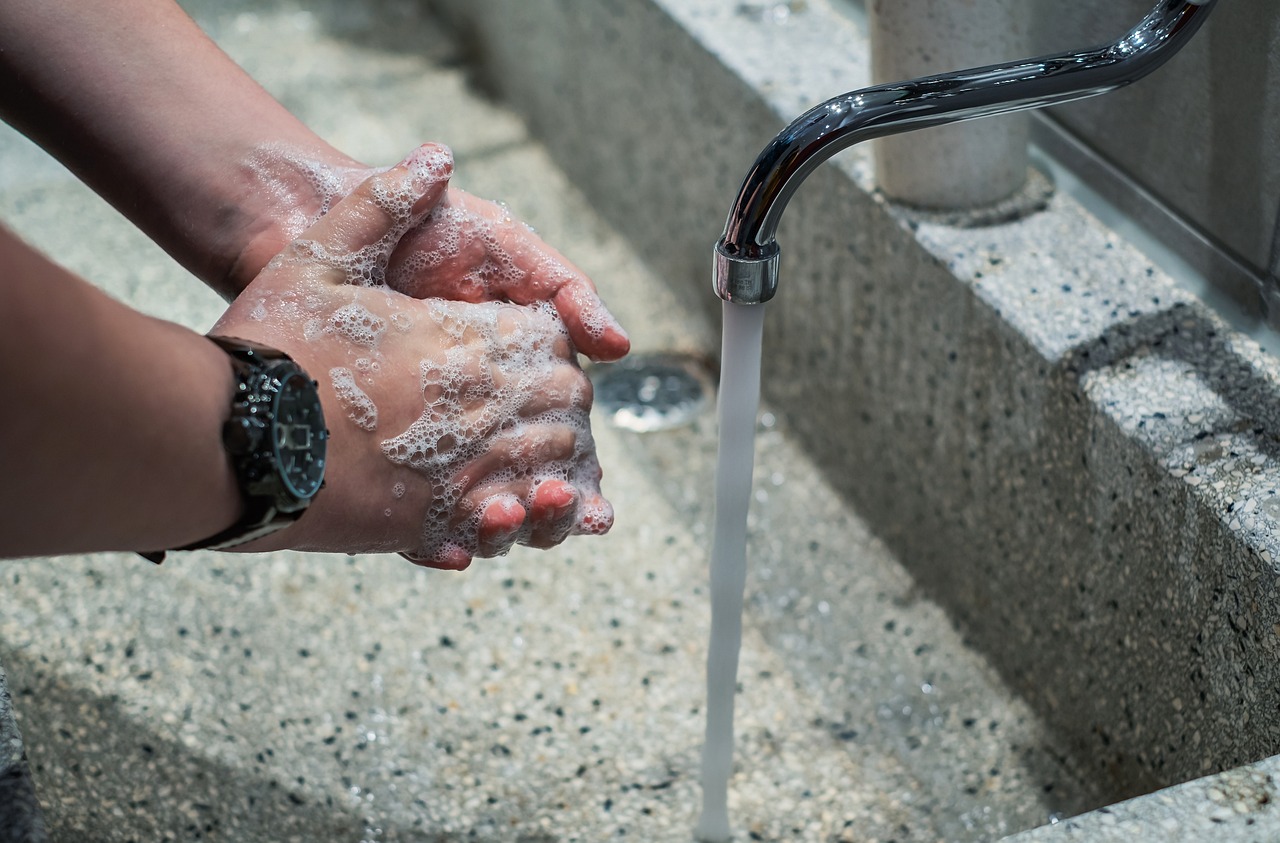
Mobility Assistance
Provide mobility aids and handrails in bathrooms to assist with balance and reduce the risk of falls. Consider installing shower seats and non-slip mats to enhance safety.
Enhancing bathroom safety is crucial, especially for individuals with mobility challenges or elderly family members. Providing mobility aids and handrails in bathrooms is a proactive step towards creating a more accessible and secure environment.
Mobility aids such as grab bars and handrails offer crucial support when moving around the bathroom. They can help individuals maintain their balance while standing up from the toilet, getting in and out of the bathtub or stepping in and out of the shower. These aids significantly reduce the risk of slips and falls, which can lead to serious injuries.
Another important addition to consider is shower seats. These seats offer a comfortable and stable place to sit while showering, making it easier for those who may have difficulty standing for extended periods. Shower seats can promote independence and reduce the strain on the body, making daily hygiene routines more manageable.
Non-slip mats are equally important in enhancing bathroom safety. Placing them in the shower or bathtub area minimizes the chances of slipping on wet surfaces. These mats provide a secure foothold, preventing accidents and adding an extra layer of protection.
Overall, these modifications not only enhance safety but also promote independence and peace of mind for individuals and their caregivers. By investing in these simple yet effective additions to your bathroom, you create a more inclusive and secure space that supports the well-being of everyone who uses it.
You can also read more about this here: High-quality health systems in the Sustainable Development Goals …

Assisted Grooming
For those with limited mobility or cognitive impairment, caregivers may need to assist with grooming tasks such as hair washing, shaving and nail care. Be patient and compassionate during these activities.
Supporting individuals with limited mobility or cognitive impairment in their daily grooming tasks is a role that requires not only practical skills but also immense patience, empathy and compassion. Caregivers play a vital role in maintaining the dignity and well-being of those they assist. Here, we’ll delve deeper into the importance of patience and compassion in caregiving and provide insights on how to approach grooming tasks:
**1. Understanding Individual Needs: Every person has unique needs and preferences when it comes to grooming. Take the time to understand the individual’s preferences and routines. What products do they prefer? Do they have any sensitivities or allergies? Tailoring care to their specific requirements shows respect for their autonomy.
**2. Establishing Trust: Building trust is essential in caregiving. Individuals with limited mobility or cognitive impairment may feel vulnerable during grooming activities. Create a safe and trusting environment by communicating calmly, maintaining eye contact and explaining each step of the process before proceeding.
**3. Creating a Comfortable Space: Ensure that the grooming environment is comfortable and conducive to relaxation. Use warm water for washing, provide soft towels and make sure the room is well-lit. Playing soothing music or engaging in gentle conversation can help create a calming atmosphere.
**4. Patience in Action: Grooming tasks may take longer for individuals with limited mobility or cognitive challenges. Be prepared to allocate extra time for these activities. Rushing can lead to stress and discomfort for both the caregiver and the individual.
**5. Sensory Awareness: Pay attention to sensory sensitivities. Some individuals may be sensitive to temperature, touch or certain textures. Use gentle, slow movements and adapt to their comfort level. Offer choices whenever possible to empower them in decision-making.
**6. Maintain Dignity: Always prioritize the individual’s dignity. Use appropriate draping and coverings to maintain their privacy and modesty. Offer assistance discreetly and be respectful of their personal space.
**7. Verbal and Non-Verbal Communication: Effective communication is key. Use clear and simple language and avoid using complex or confusing terms. Maintain a soothing and reassuring tone throughout the process. Non-verbal cues, such as a reassuring touch or a smile, can convey compassion and support.
**8. Flexibility and Adaptability: Grooming routines may need to be adapted over time as an individual’s needs change. Stay flexible and adjust your approach accordingly. Regularly assess their comfort level and adapt your care plan accordingly.
**9. Emotional Support: Grooming can sometimes evoke emotional responses, such as frustration or embarrassment. Be prepared to offer emotional support and a listening ear. Validate their feelings and reassure them that it’s okay to express their emotions.
**10. Self-Care for Caregivers: Caregivers also need self-care to maintain their own well-being. Seeking support from support groups, respite care or counseling can help caregivers manage the emotional demands of their role.
**11. Continuous Learning: Keep learning about the individual’s condition and needs. Staying informed about any medical or cognitive changes can help you provide better care.
Grooming tasks, when approached with patience and compassion, can become opportunities to strengthen the caregiver-client bond. Each interaction is a chance to enhance the individual’s sense of well-being and maintain their dignity. Remember that the caregiving journey is a partnership built on trust and empathy and by embracing these principles, you can provide the best possible care and support to those in need.
If you’d like to dive deeper into this subject, there’s more to discover on this page: Use of the physical environment to support everyday activities for …
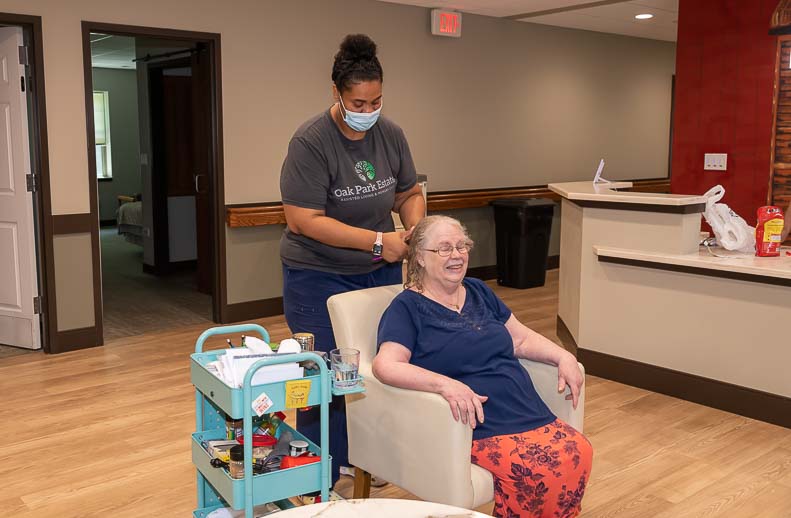
Incontinence Care
Elderly individuals with incontinence issues require extra attention. Ensure that they have access to adult diapers, wipes and a clean change of clothing when needed.
Elderly individuals with incontinence issues require extra attention and care to maintain their dignity and well-being. It’s essential to create a supportive environment that addresses their specific needs comprehensively. Here are a few additional points to consider:
Regular Monitoring: Consistent monitoring of elderly individuals with incontinence issues is crucial. Regularly checking on them can help anticipate their needs and ensure they receive assistance promptly.
Comfort and Hygiene: Besides providing access to adult diapers and wipes, it’s essential to prioritize their comfort and hygiene. Use skin-friendly products to prevent skin irritation and discomfort.
Privacy and Respect: Respect their privacy and dignity when helping with changing or cleaning. Ensure that they have a private and comfortable space where they can maintain their personal hygiene.
Communication: Open and empathetic communication is key. Encourage them to communicate their needs and preferences, as this can help tailor the care provided to their specific requirements.
Medical Assessment: Consult with healthcare professionals to determine the underlying causes of incontinence. Addressing any medical issues or adjusting medications can sometimes improve the condition.
Mobility and Accessibility: Ensure that the living environment is safe and accessible. This might involve installing grab bars in the bathroom or providing mobility aids to prevent accidents.
Emotional Support: Understand that incontinence can be emotionally challenging for elderly individuals. Offer emotional support and reassurance and involve them in decision-making whenever possible.
Quality of Life: Incontinence should not hinder their quality of life. Encourage them to engage in social activities and hobbies they enjoy and make necessary accommodations to facilitate their participation.
Family and Caregiver Education: Educate family members and caregivers about incontinence and how to provide the best care. This ensures consistency in caregiving and reduces the burden on the primary caregiver.
Professional Help: In some cases, it may be beneficial to seek professional caregiving assistance or consider long-term care facilities where specialized care can be provided if the incontinence is severe and challenging to manage at home.
In summary, caring for elderly individuals with incontinence issues requires a holistic approach that encompasses not only the provision of essential supplies but also respect, empathy, communication and a focus on their overall well-being and quality of life.
Explore this link for a more extensive examination of the topic: Understanding the care and support needs of older people: a …

Hygiene for Individuals with Disabilities
People with disabilities often face unique challenges in maintaining personal hygiene. It’s essential to accommodate their specific needs to promote independence and well-being.
People with disabilities encounter distinctive obstacles when it comes to personal hygiene due to various physical and sensory limitations. These challenges should prompt us to prioritize inclusivity and empathy in our approach to healthcare and accessibility. By recognizing and addressing their specific needs, we can empower individuals with disabilities to maintain their personal hygiene independently, fostering not only physical well-being but also promoting dignity, self-esteem and overall quality of life. This inclusive perspective reminds us that ensuring equal access to hygiene resources and facilities is not just a matter of convenience but a fundamental step towards a more compassionate and equitable society.
For a comprehensive look at this subject, we invite you to read more on this dedicated page: Roles of Community Health Workers – RHIhub Toolkit

Accessible Facilities
Ensure that bathrooms and hygiene areas are wheelchair accessible and equipped with adaptive devices like shower benches and hand-held showerheads.
Creating Inclusive and Accessible Spaces for All: Elevating Bathroom Accessibility
In our commitment to inclusivity and accessibility, it’s imperative to go beyond the basics and ensure that bathrooms and hygiene areas are not only wheelchair accessible but truly accommodating for individuals with diverse needs. Here, we delve deeper into how we can enhance these spaces to foster comfort, independence and dignity for everyone:
Universal Design Principles: When designing or renovating bathrooms and hygiene areas, let’s incorporate universal design principles. This approach ensures that the space is usable by people of all abilities, ages and sizes. Think about wider entryways, ample turning space and open layouts to accommodate wheelchairs and mobility aids effortlessly.
Height-Adjustable Fixtures: Install height-adjustable sinks and countertops to cater to individuals of varying statures. This way, people can comfortably use these facilities whether they are standing, sitting in a wheelchair or using other mobility devices.
Advanced Adaptive Devices: Beyond shower benches and hand-held showerheads, consider advanced adaptive devices like motorized lifts that can assist people with mobility challenges in getting in and out of the shower or bath. These devices not only ensure safety but also promote independence.
Tactile and Auditory Signage: Implement tactile and auditory signage, making it easier for those with visual or hearing impairments to navigate the restroom. Braille instructions and audio cues can guide individuals to specific fixtures and amenities.
Well-Designed Grab Bars: The placement and design of grab bars are crucial. Ensure they are sturdy, well-anchored and strategically located throughout the space, not just by the toilet and shower but also at the sink and in transition areas. These bars should be functional for users with varying mobility needs.
Non-Slip Flooring: Choose non-slip flooring materials to prevent accidents, especially in wet areas. These materials should provide a secure grip, reducing the risk of slips and falls for everyone, including those with mobility challenges.
Accessible Storage: Include storage solutions that are within reach for individuals using wheelchairs or mobility aids. Lower cabinets, pull-out shelves and clear storage bins help maintain an organized and accessible environment.
Visual Contrasts: Ensure good visual contrast between different elements in the bathroom, such as walls, fixtures and grab bars. This aids people with visual impairments in identifying and navigating the space effectively.
Adequate Lighting: Proper lighting is essential. Use fixtures that provide even illumination to reduce glare and shadows, benefiting individuals with vision impairments or sensitivity to bright lights.
User Feedback and Continuous Improvement: Regularly seek feedback from users, including those with disabilities, to identify areas for improvement. Be open to making necessary adjustments to enhance the accessibility of the space continually.
By extending our focus from basic wheelchair accessibility to a comprehensive approach that considers the diverse needs of all individuals, we can create hygiene areas that truly prioritize inclusivity. In doing so, we not only meet legal requirements but also foster a more equitable and welcoming environment for everyone who uses these facilities.
For a comprehensive look at this subject, we invite you to read more on this dedicated page: Social and Behavior Change Activities | Global Water, Sanitation …
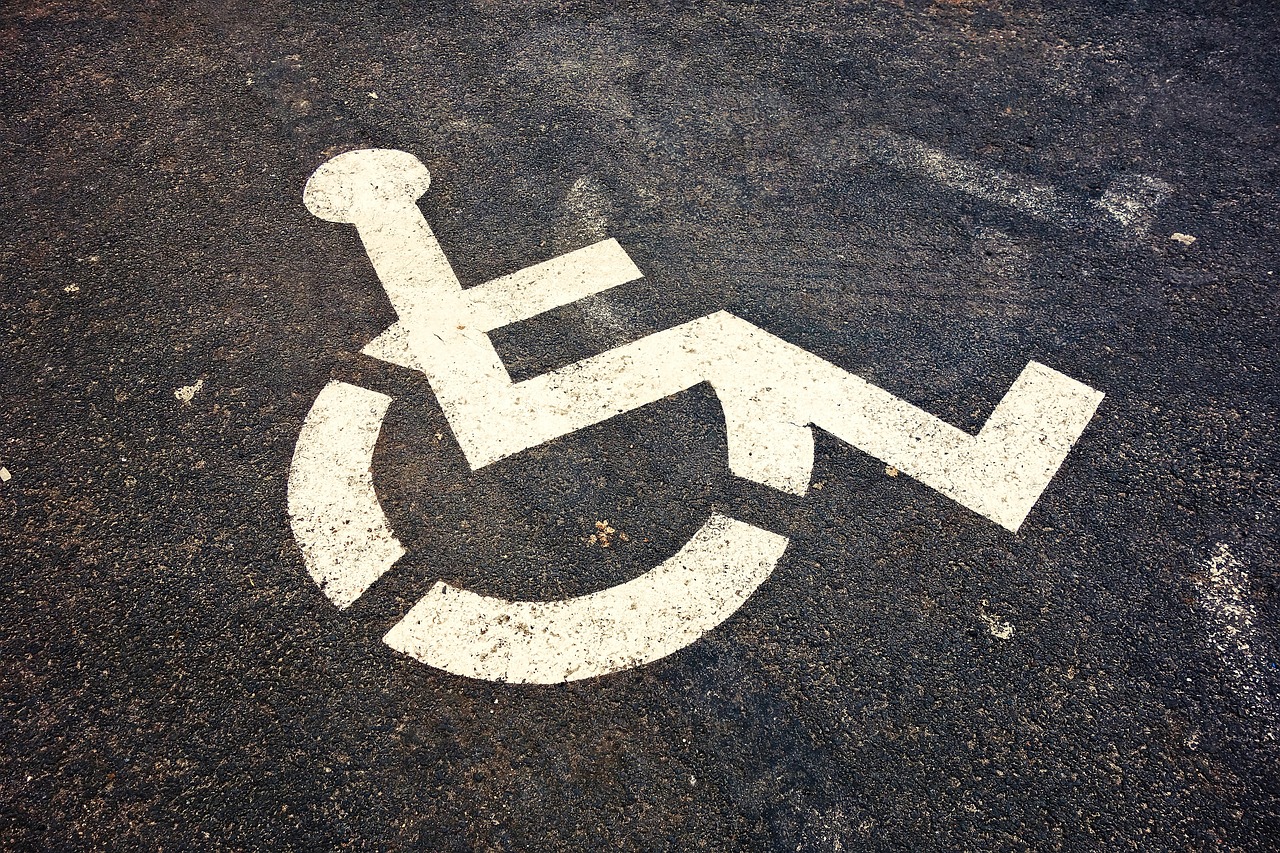
Assistive Tools
Individuals with limited dexterity may benefit from specialized grooming aids, such as toothbrush holders, adapted razors and long-handled sponges.
For individuals with limited dexterity, maintaining personal hygiene can be challenging, but there’s a world of specialized grooming aids designed to make their daily routines more manageable and comfortable. These adaptive tools can significantly enhance their independence and overall well-being.
Toothbrush Holders: A toothbrush holder with a secure grip and ergonomic design can make brushing teeth easier. These holders are often designed to accommodate various toothbrush sizes and shapes, ensuring that individuals with limited dexterity can maintain good oral hygiene without struggling to hold the brush steadily.
Adapted Razors: Shaving can be a daunting task for those with dexterity issues. However, adapted razors with features like extended handles, textured grips and adjustable angles can provide more control and reduce the risk of nicks and cuts. Electric razors are another option, as they often require less manual dexterity than traditional razors.
Long-Handled Sponges: Bathing can also pose challenges, especially when it comes to reaching difficult-to-access areas. Long-handled sponges or scrubbers are valuable tools for individuals with limited reach or mobility. These aids can help them cleanse their back, lower limbs and other hard-to-reach places effectively.
Hairbrushes with Extended Handles: Hair care is another aspect of grooming that may require adaptive tools. Hairbrushes with extended handles provide better reach and control, allowing individuals to manage their hair with greater ease. Additionally, ergonomic brush designs can reduce strain on the wrist and hand.
Nail Clippers and Files: Trimming and maintaining nails can be challenging for those with limited dexterity. Specialized nail clippers and files with larger, easier-to-grip handles are available to facilitate nail care. Some designs also incorporate magnifying glasses to aid in precision.
Button Hooks and Zipper Pulls: Dressing independently can be a significant challenge. Button hooks and zipper pulls with extended handles can assist in fastening buttons and pulling zippers, making getting dressed a more manageable task.
Eating and Drinking Aids: Personal hygiene extends to mealtimes as well. Adaptive utensils and cups with built-up handles can help individuals with limited dexterity maintain their independence during meals.
Grooming Kits: Some companies offer comprehensive grooming kits specifically designed for individuals with disabilities. These kits often include a range of adaptive tools to address various grooming needs.
It’s essential to consult with healthcare professionals or occupational therapists who can assess an individual’s specific needs and recommend the most suitable grooming aids. These specialized tools can make a significant difference in the daily lives of individuals with limited dexterity, enhancing their sense of independence and overall well-being.
Should you desire more in-depth information, it’s available for your perusal on this page: Disabilities Inclusive Education Systems and Policies Guide for Low …

Customized Care Plans
Collaborate with caregivers and healthcare professionals to create personalized hygiene plans that address the unique needs and preferences of individuals with disabilities.
“Collaborate with caregivers and healthcare professionals to create personalized hygiene plans that address the unique needs and preferences of individuals with disabilities, fostering a holistic and empowering approach to their overall well-being.
Empowerment Through Choice: Encourage individuals with disabilities to actively participate in the creation of their hygiene plans. By including them in decision-making processes, you can empower them to make choices that reflect their personal preferences, which can significantly boost their self-esteem and confidence.
Tailored Solutions: Recognize that each individual with a disability has a distinct set of requirements. Collaborate closely with caregivers and healthcare professionals to tailor hygiene plans that consider specific physical, sensory or cognitive challenges. This customization ensures that the plan is both effective and manageable for the individual.
Education and Training: Equip caregivers and healthcare professionals with the knowledge and skills necessary to implement these personalized hygiene plans effectively. This education should encompass not only the technical aspects of caregiving but also a deep understanding of the individual’s condition and unique needs.
Continuous Assessment: Hygiene needs can evolve over time due to changes in an individual’s health, environment or personal preferences. Regularly assess and update the hygiene plan to adapt to these changes and ensure that it remains relevant and effective.
Inclusive Facilities and Products: Advocate for and implement accessible facilities and hygiene products that accommodate individuals with disabilities. This might include accessible bathrooms, specialized assistive devices and sensory-friendly toiletries.
Community Support Networks: Encourage the formation of support networks among caregivers, healthcare professionals and individuals with disabilities. These networks can provide valuable insights, emotional support and shared experiences that can enhance the effectiveness of personalized hygiene plans.
Promote Dignity and Respect: Uphold the principles of dignity and respect in all aspects of care. Ensure that the process of creating and implementing personalized hygiene plans respects the individual’s privacy and autonomy.
Data-Driven Decision-Making: Utilize data and feedback from individuals with disabilities, caregivers and healthcare professionals to continuously improve hygiene plans. This approach can help identify areas for enhancement and ensure that the plans remain person-centered.
Advocacy and Awareness: Raise awareness about the importance of personalized hygiene plans for individuals with disabilities. Advocate for policy changes and resources that support the development and implementation of these plans within healthcare systems and communities.
Collaborative Care Teams: Foster collaboration among healthcare professionals from various specialties to address the multifaceted needs of individuals with disabilities comprehensively. This interdisciplinary approach ensures that hygiene plans are integrated seamlessly into overall care plans.
By extending this idea and implementing these strategies, we can create a healthcare system that truly values the individuality of each person with a disability, promoting their overall well-being, independence and quality of life.”
Looking for more insights? You’ll find them right here in our extended coverage: Helping patients help themselves: A systematic review of self …

Hygiene for Specific Health Conditions
Certain health conditions require special hygiene considerations, whether it’s managing skin conditions, chronic illnesses or infections.
Certain health conditions require special hygiene considerations to effectively manage the individual’s well-being. These considerations encompass a wide spectrum of health-related challenges, ranging from skin conditions and chronic illnesses to infectious diseases.
For individuals with skin conditions such as eczema or psoriasis, maintaining proper hygiene is paramount to alleviate discomfort and prevent exacerbations. Using gentle, fragrance-free cleansers and moisturizers, as well as avoiding irritants, becomes a daily routine. Additionally, careful attention to cleanliness and the avoidance of triggers like allergens or harsh detergents play pivotal roles in managing these conditions effectively.
Chronic illnesses, on the other hand, often demand a comprehensive approach to hygiene. Conditions like diabetes necessitate meticulous attention to foot hygiene to prevent complications such as ulcers. Those with compromised immune systems, as seen in autoimmune diseases or following organ transplants, must be vigilant about handwashing and avoiding potential sources of infection.
Infections, both acute and chronic, require strict hygiene measures to curb their spread. Whether it’s a common cold, flu or more serious illnesses like HIV, adhering to good hygiene practices can make a significant difference in recovery and overall health. Frequent handwashing, covering coughs and sneezes and proper disposal of tissues are essential habits in preventing the transmission of infections.
In essence, recognizing the unique hygiene needs associated with specific health conditions is crucial for maintaining both comfort and overall health. Tailoring hygiene practices to the individual’s condition can significantly contribute to their well-being and quality of life.
You can also read more about this here: The Role of Sleep Hygiene in Promoting Public Health: A Review of …

Skin Conditions
Individuals with eczema, psoriasis or other skin conditions may need gentle, fragrance-free skincare products to prevent exacerbation of symptoms.
Individuals grappling with eczema, psoriasis or various skin conditions face unique challenges in managing their skin health. It’s not just about aesthetics; it’s about their overall well-being. These conditions can be uncomfortable, painful and emotionally taxing. Therefore, choosing the right skincare products becomes paramount for them.
For these individuals, gentle and fragrance-free skincare products are more than just a preference; they’re a necessity. Here’s why:
Avoiding Irritants: Fragrances in skincare products often contain synthetic chemicals and potential allergens that can trigger irritation and worsen skin conditions. Fragrance-free options reduce the risk of these reactions, helping to keep skin calm and comfortable.
Preserving the Skin Barrier: Eczema and psoriasis are characterized by compromised skin barriers. Harsh ingredients and fragrances can further disrupt this delicate balance, leading to increased dryness, redness and itching. Gentle, fragrance-free products support the restoration of the skin barrier, promoting healing.
Minimizing Flare-Ups: Skincare products with fragrances can be a common trigger for flare-ups in those with sensitive skin conditions. Opting for fragrance-free options minimizes the chances of exacerbating symptoms and helps maintain skin stability.
Enhancing Moisture Retention: Hydration is key to managing skin conditions. Fragrance-free products are often formulated with a focus on hydration without added irritants, allowing the skin to retain moisture and reducing dryness.
Less Risk of Allergic Reactions: Fragrances can be one of the leading causes of allergic contact dermatitis. By choosing fragrance-free skincare, individuals reduce the risk of experiencing painful allergic reactions that can further complicate their skin conditions.
Dermatologist Recommendations: Dermatologists often recommend fragrance-free products for patients with skin conditions. These professionals understand the importance of minimizing potential irritants and allergens in skincare routines.
Customized Care: Every individual’s skin condition is unique and what works for one may not work for another. Choosing fragrance-free products allows individuals to customize their skincare routines to meet their specific needs without the added complexity of potential irritants.
In summary, for those dealing with eczema, psoriasis or other skin conditions, the choice of skincare products is not just about cosmetics; it’s a crucial aspect of symptom management and overall well-being. Opting for gentle, fragrance-free options is a proactive step towards maintaining skin health, reducing discomfort and improving their quality of life. It’s a commitment to nurturing their skin and taking control of their journey toward healthier, happier skin.
To delve further into this matter, we encourage you to check out the additional resources provided here: Chapter 6—Treatment Considerations for Special Populations …

Chronic Illness
Managing chronic illnesses often involves medication regimens that may impact oral health. Regular dental check-ups and proper oral hygiene are essential for these individuals.
For individuals managing chronic illnesses, maintaining their overall health is a multifaceted journey that requires careful attention to various aspects of well-being. One critical facet that often goes hand-in-hand with chronic illness management is oral health. Here’s why regular dental check-ups and proper oral hygiene are essential for these individuals:
Medication Effects: Many medications prescribed for chronic illnesses can have side effects that impact oral health. For example, some medications can cause dry mouth (xerostomia), which reduces saliva production. Saliva plays a crucial role in protecting teeth and gums by neutralizing acids and preventing the growth of harmful bacteria. Reduced saliva can increase the risk of cavities and gum disease.
Immune System Vulnerability: Chronic illnesses can weaken the immune system, making it less effective at combating infections, including oral infections. Gum disease, in particular, can have systemic effects, potentially exacerbating existing health issues. Regular dental check-ups can help detect and address oral infections early, preventing them from spreading to other parts of the body.
Nutritional Implications: Certain chronic illnesses may require dietary modifications or restrictions. Individuals with restricted diets may be at a higher risk of nutrient deficiencies that can affect oral health. Dental professionals can offer guidance on maintaining a balanced diet and suggest supplements when necessary.
Pain Management: Chronic illnesses often come with pain and discomfort. Oral health problems, such as toothaches or gum infections, can add to this burden. Regular dental check-ups can help identify and address dental issues before they become painful and more challenging to manage.
Medication Interactions: Dentists are trained to understand how medications prescribed for chronic illnesses can interact with dental treatments. This knowledge is crucial for avoiding complications during dental procedures or adjustments in medication regimens.
Quality of Life: Good oral health is essential for a high quality of life. It enables individuals to eat, speak and smile comfortably. Managing oral health can also boost self-esteem and mental well-being, which can be particularly important for individuals dealing with the challenges of chronic illness.
In conclusion, for those managing chronic illnesses, oral health should not be overlooked. It is an integral part of their overall well-being and can directly impact their ability to manage their conditions effectively. Regular dental check-ups and a commitment to proper oral hygiene can help prevent complications, manage pain and maintain a good quality of life. Integrating dental care into the holistic management of chronic illnesses is a proactive step toward better health and well-being.
To expand your knowledge on this subject, make sure to read on at this location: Helping patients help themselves: A systematic review of self …

Infections
For individuals with contagious infections, strict hygiene measures are crucial to prevent the spread of illness. This includes proper handwashing, disinfection of shared surfaces and mask-wearing when necessary.
Certainly, let’s explore the importance of strict hygiene measures in preventing the spread of contagious infections in more detail:
The Role of Strict Hygiene Measures:
When contagious infections are a concern, strict hygiene measures are not merely precautionary; they are critical in curbing the transmission of illnesses. These measures serve both as preventive steps for healthy individuals and as responsible actions for those who are already infected.
Proper Handwashing: Effective handwashing is the first line of defense against the spread of contagious infections. It’s essential not only to wash hands frequently but also to do so thoroughly, with soap and water for at least 20 seconds. Handwashing removes germs that might have been picked up from contaminated surfaces or through contact with an infected person. It should become a routine habit, especially before preparing or consuming food, after using the restroom and after being in public spaces.
Disinfection of Shared Surfaces: Contaminated surfaces can harbor viruses and bacteria, making them potential sources of infection. Regular disinfection of commonly touched surfaces such as doorknobs, light switches, countertops and shared electronics is essential. Using EPA-approved disinfectants that are effective against the specific pathogen in question is crucial for thorough sanitation.
Mask-Wearing: Masks serve as a barrier to prevent respiratory droplets, which may carry infectious particles, from being expelled into the air. They are particularly vital in situations where social distancing is challenging, such as public transportation or crowded indoor spaces. Mask-wearing is not only a means of protecting oneself but also a gesture of consideration for the health of others, as it reduces the risk of asymptomatic carriers unknowingly transmitting the infection.
Respiratory Hygiene: Encouraging respiratory hygiene is essential for individuals with contagious infections. Covering one’s mouth and nose with a tissue or elbow when coughing or sneezing helps prevent the dispersal of respiratory droplets that may contain the virus. Used tissues should be promptly disposed of in a closed bin.
Isolation and Quarantine: Individuals who are infected or have been in close contact with an infected person should adhere to isolation and quarantine guidelines recommended by health authorities. This helps prevent the further spread of the infection to others and is a crucial step in controlling outbreaks.
Hand Sanitizers: In situations where handwashing facilities are not readily available, alcohol-based hand sanitizers with at least 60% alcohol content can be used as a temporary alternative. While hand sanitizers are effective, they should not replace proper handwashing, especially when hands are visibly dirty.
Public Health Responsibility:
The adherence to strict hygiene measures, particularly during contagious outbreaks, is not solely an individual responsibility but also a collective one. Communities and organizations must take an active role in promoting and enforcing these measures to protect public health.
In conclusion, strict hygiene measures, including proper handwashing, surface disinfection, mask-wearing and respiratory etiquette, play a pivotal role in preventing the spread of contagious infections. These measures are not only essential for personal protection but also demonstrate a sense of responsibility toward the well-being of others. Public health campaigns, education and community support are key in ensuring widespread compliance with these measures during outbreaks, ultimately contributing to the containment of infectious diseases.
To delve further into this matter, we encourage you to check out the additional resources provided here: Interventions to improve hand hygiene compliance in patient care …
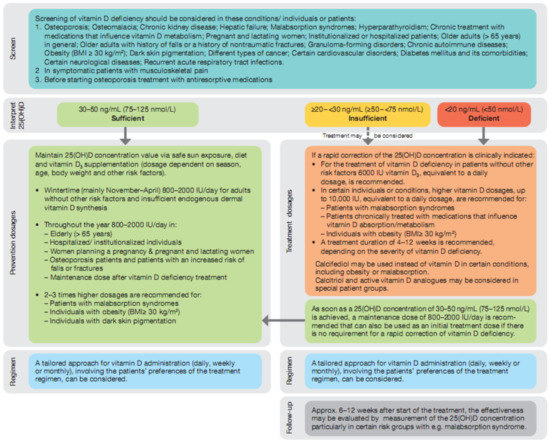
Hygiene is a basic human need and everyone deserves access to tailored hygiene approaches that meet their specific requirements. By recognizing the unique challenges faced by special populations, whether they are children, the elderly, individuals with disabilities or those with specific health conditions, we can ensure that personal cleanliness contributes to their comfort, dignity and overall quality of life. Hygiene should be inclusive, compassionate and adaptable to cater to the diverse needs of our communities, fostering a healthier and more equitable society.
Hygiene is a basic human need and everyone deserves access to tailored hygiene approaches that meet their specific requirements. This principle holds especially true when considering the diverse needs of special populations within our communities. By recognizing the unique challenges faced by these individuals, whether they are children, the elderly, individuals with disabilities or those with specific health conditions, we can ensure that personal cleanliness contributes to their comfort, dignity and overall quality of life.
Children: Teaching children proper hygiene habits is essential, but it also requires patience and age-appropriate guidance. Child-friendly hygiene education materials, accessible sinks and soap dispensers and playful reminders can help create a hygienic environment that is conducive to their learning and development.
The Elderly: As people age, mobility and dexterity may decrease, making it more challenging to perform basic hygiene tasks. Providing support through assistive devices, home modifications and caregiver assistance ensures that elderly individuals can maintain their personal cleanliness, promoting their well-being and independence.
Individuals with Disabilities: Tailoring hygiene approaches for individuals with disabilities is essential. This may involve accessible facilities, adaptive hygiene aids and personalized routines that accommodate their unique needs. Empowering individuals with disabilities to take control of their hygiene to the best of their abilities fosters their autonomy and self-esteem.
Specific Health Conditions: Certain medical conditions, such as diabetes or skin disorders, require specialized hygiene practices. By recognizing these needs and providing information, resources and products that cater to these conditions, we can help individuals manage their health effectively.
Mental Health: Hygiene can be particularly challenging for individuals with mental health issues. Offering a supportive and non-judgmental environment, as well as access to counseling and therapy, can help these individuals maintain personal cleanliness as a crucial aspect of their self-care.
Homelessness: For homeless individuals, access to basic hygiene facilities like public restrooms and showers can make a world of difference in their dignity and well-being. Community initiatives that provide hygiene kits and mobile hygiene units can help address this pressing need.
Cultural Sensitivity: Recognizing cultural differences in hygiene practices is essential. Ensuring that hygiene approaches are culturally sensitive and respectful of diverse traditions is vital to foster inclusivity and respect.
Hygiene should be inclusive, compassionate and adaptable to cater to the diverse needs of our communities, fostering a healthier and more equitable society. When we consider the specific requirements of different populations, we not only promote physical health but also uphold the dignity and human rights of all individuals. By embracing this inclusive approach, we can create a more compassionate and empathetic world where everyone can maintain their personal cleanliness and well-being with dignity and pride.
For additional details, consider exploring the related content available here Chapter 5—Specialized Substance Abuse Treatment Programs – A …
More links
Looking for more insights? You’ll find them right here in our extended coverage: Tailored Healthcare: Two Perspectives on the Development and …
